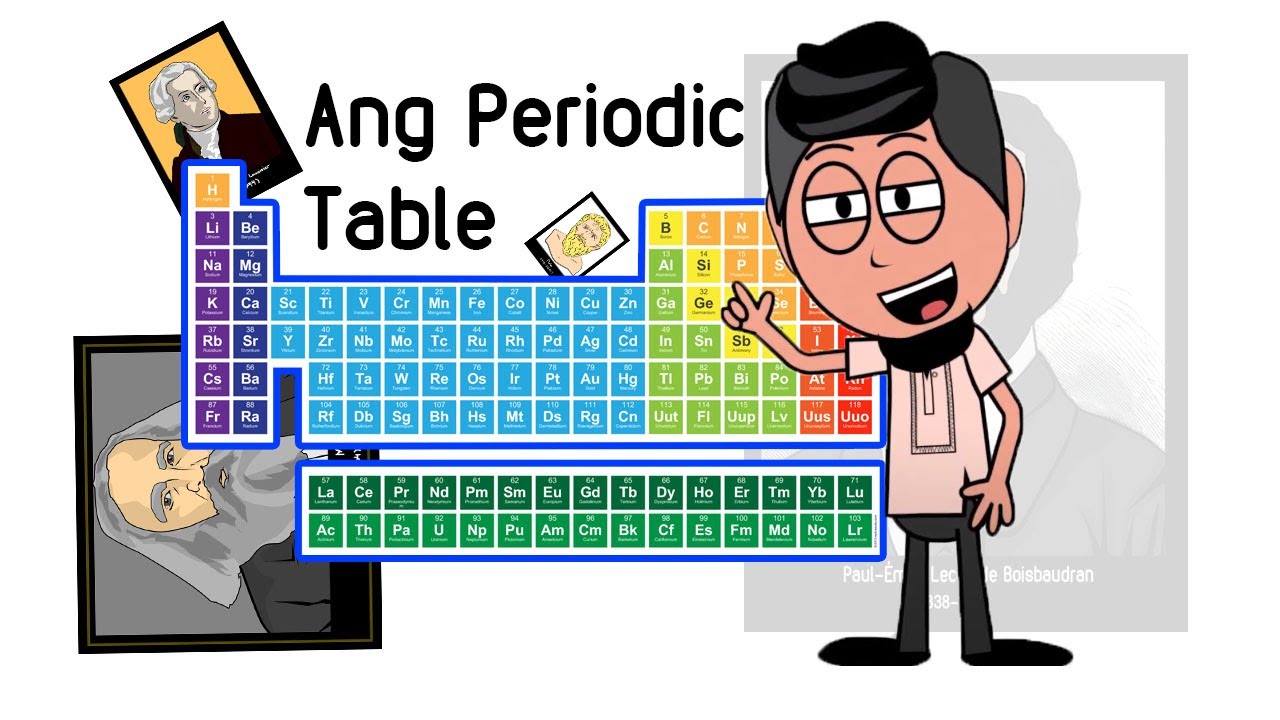Tabel Periodik Unsur Kimia | Golongan IA & IIA
Summary
TLDRThis video provides an informative exploration of the periodic table of elements, starting with the introduction of Dmitri Mendeleev, who created the first periodic table in 1869. It covers the arrangement of elements by atomic number and their grouped properties, including the alkali metals in group 1A and the alkaline earth metals in group 2A. The video explains the characteristics, uses, and practical applications of each element in these groups, such as hydrogen, lithium, sodium, potassium, and others. Viewers gain insights into how these elements are used in everyday life, industry, and scientific advancements.
Takeaways
- 😀 The periodic table organizes chemical elements based on their atomic number, with similarities in properties among elements in the same group.
- 😀 Dmitri Mendeleev, a Russian chemist, created the periodic table of elements in 1869, arranging them based on atomic mass and recognizing patterns in their properties.
- 😀 The periodic table currently consists of 118 elements, grouped into 18 columns, with Group 1A and 2A being among the most notable.
- 😀 Group 1A contains alkali metals (except hydrogen), which react with water to form bases or alkalis.
- 😀 Hydrogen, while in Group 1A, is not classified as an alkali metal because its properties differ from the other elements in this group.
- 😀 Lithium (Li), sodium (Na), and potassium (K) are key alkali metals in Group 1A, each with distinct uses, such as in batteries, soap, and nutrition.
- 😀 Cesium (Cs) and francium (Fr) are also alkali metals, with cesium being used in atomic clocks and francium being rare and highly reactive.
- 😀 Group 2A elements are alkaline earth metals, which include beryllium (Be), magnesium (Mg), calcium (Ca), strontium (Sr), barium (Ba), and radium (Ra).
- 😀 Beryllium is a light and strong metal used in alloys, while magnesium is widely used in fireworks and flares.
- 😀 Calcium, found in dairy products, is essential for human health, while strontium, barium, and radium have various industrial and scientific uses, with radium being radioactive and historically used in glowing paints.
Q & A
Who created the periodic table of elements?
-The periodic table of elements was created by Dmitri Ivanovich Mendeleev, a Russian chemist, in 1869.
How did Mendeleev arrange the elements in the periodic table?
-Mendeleev arranged the elements based on their atomic mass, observing that elements with similar properties appeared at regular intervals.
How many elements are in the modern periodic table, and how are they arranged?
-The modern periodic table consists of 118 elements, arranged by their atomic number rather than atomic mass.
What are the key characteristics of elements in Group 1A?
-Elements in Group 1A are alkali metals, which react with water to form bases (alkalies). They are highly reactive, except for hydrogen, which, despite being in this group, is not an alkali metal.
What is the role of hydrogen in Group 1A despite its differences?
-Hydrogen is part of Group 1A but does not share the characteristics of alkali metals. It is a gas, highly flammable, and used in applications like rocket fuel and balloons.
What are the uses of lithium in daily life?
-Lithium is used in the production of spacecraft, batteries, and medicines.
What are the characteristics and uses of sodium (Na)?
-Sodium is a soft, white alkali metal used in products like soap, animal nutrition, and ice melt.
What distinguishes potassium from other alkali metals?
-Potassium is a soft, silver-white alkali metal that reacts explosively with water, burning with a violet flame. It is found in vegetables and fruits.
What is rubidium used for in daily life?
-Rubidium is used in making purple fireworks and ceramics.
What is the main use of cesium, and how does it differ from other alkali metals?
-Cesium is a soft, silver-white alkali metal and is one of the five elements that are liquid at room temperature. It is primarily used in atomic clocks.
Why is francium rarely used in practical applications?
-Francium is extremely rare and highly radioactive, making its use highly limited.
What are the characteristics of elements in Group 2A?
-Group 2A elements, also known as alkaline earth metals, are typically harder and less reactive than alkali metals. They are used in a variety of applications, including construction and medicine.
What is the primary use of beryllium?
-Beryllium is used as a reinforcing agent in alloys, especially in aerospace applications.
What is magnesium used for in daily life?
-Magnesium is used in fireworks, flares, and as a component in light alloys.
How is calcium used in everyday life?
-Calcium is found in products like dairy, seeds, and vegetables and is essential for bone health.
What are some applications of strontium and barium?
-Strontium is used in colored television screens, while barium is used in fireworks to produce green colors.
Outlines

This section is available to paid users only. Please upgrade to access this part.
Upgrade NowMindmap

This section is available to paid users only. Please upgrade to access this part.
Upgrade NowKeywords

This section is available to paid users only. Please upgrade to access this part.
Upgrade NowHighlights

This section is available to paid users only. Please upgrade to access this part.
Upgrade NowTranscripts

This section is available to paid users only. Please upgrade to access this part.
Upgrade NowBrowse More Related Video

Periodic Law: The Origin of the Periodic Table

Tabel periodik Unsur bagian 1- Perkembangan Tabel Periodik Unsur- KIMIA SMA kelas 10 semester 1

Sejarah Sistem Periodik Unsur - SMP/SMA

La Tavola periodica degli elementi | Lezioni di Chimica

Ang Periodic Table: Brief History in Tagalog

Perkembangan Tabel Periodik Unsur Kimia Kelas 10
5.0 / 5 (0 votes)